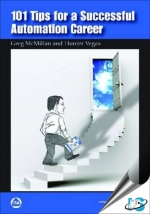Tab Article
Do you want to:
- Know more than your boss?
- Sleep like a baby before a startup (less crying in the middle of the night)?
- Get back early from startups?
- Have vendors ask what you think works best?
- Become the “Go To Person?”
- Have your CEO smile at you?
- Inspire your children to become automation engineers?
- Get a knowing twinkle in your eyes like the technologist about to retire?
- Get asked what is your key to success?
- Get invited by operators to special meals in the control room kitchen?
- Create a worldwide recognition of the value of the automation profession?
- Become famous and a regular guest on late nite TV?
- Be remembered for all the right reasons?
While this book cannot guarantee the above results, the content should provide an automation engineer with a proven path to career and technical success. So much of the automation field depends upon experience, and many feel that experience can only come with gray, thinning hair and lots of wrinkles. However, with this book, we invite you to take full advantage of two lifetimes of hard-fought lessons learned and to avoid many of the technical and career pitfalls made by the authors.
With 60 years of automation and control experience, we—Greg McMillan and Hunter Vegas—have installed hundreds of millions of dollars’ worth of equipment and managed thousands of projects. We have witnessed (and occasionally committed) a whole host of blunders, and we have the scars and gray hair to prove it. Fortunately for you, we are willing to share what works and what doesn’t work so that the next generation can benefit.
So… save your hair! Avoid premature aging! And most importantly, save yourself a whole lot of pain and suffering! We sure wish we’d had a book like this when we were getting started.


